Website Temporary Closed
Nintendo NES
The Nintendo Entertainment System is one of the great success stories in video game history. To better explain the story of this console, we first have to talk about some of the history of videogames before the console was even started...
In the late seventies and early eighties, American giant Atari dominated the worldwide home video game market, with a number of other developers trying to compete but falling short. However, between 1982 and 1984, the American videogame market crashed and paved way for a new wave of consoles & manufacturers. The crash was due a number of key events which effected each of the existing video game companies at that time.
Consumer confidence in Atari had fallen after a number of highly anticipated releases failed to impress. The 2600 version of Pacman looked nothing like Namco's arcade hit, and Atari spent a fortune on the rights to produce a game for E.T. So confident were they that the game would outsell anything else ever produced that they (apparently) produced more copies of the games than there were consoles! The game was a disaster, and Atari ended up destroying millions of copies of both games, along with a slew of other games they had 'over produced'.
[collapse collapsed title=read more...]
The American market turned its attention to the Colecovision, made by Coleco. Not only did it boast a number of almost arcade perfect games from Nintendo, Sega & Konami but it produced an adapter to allow Atari 2600 games to be played on the Coleco console. Atari fought back by releasing the 5200, which was an improvement on their 2600 and had superior sound and graphics capability. Unfortunately the machine didn't sell very well, and Atari announced poor sales resulting in a massive stock drop for Warner Communications, its parent company.
The advent of the Commodore 64 computer, a cheap powerful alternative to video games consoles sparked Coleco to reveal its new 'Adam' computer. The company piled all its money into production of the new machine, which was a very bad move as the machines were poorly made and over half were sent back with faults. Eventually Coleco went bust, the Colecovision disappeared into the ether, and its games went with it.
Nintendo had felt some of the impact of this as they had ported a few of their successful arcade games (Donkey Kong & Donkey Kong Jr) onto the Colecovision. But Nintendo had also decided that if they were going to release their own titles onto the home video game market, they would also produce the machines to play them on...
They started producing the Family Computer, or Famicom as it is better known, and it was released in Japan in 1983. Unfortunately, its early release wasn't without its problems. The 'console' (I use this term loosely, as it was initially released as a home computer) was produced in remarkably quick time, probably as an attempt to compete with Sega's third offering - the Sega Mark III, and as such the Famicom had a number of teething problems.
Nintendo noticed that their machine had done relatively well not as a home computer, but as a games console. They had ported the same games onto their new Famicom that disappeared with the Colecovision and this seemed to be the selling point of the new machine. Nintendo had initially signed a deal with Atari, which gave the American giant the sole rights to produce the Famicom outside of Japan. Unfortunately, in the aftermath of a insider trading scandal at Atari, the Nintendo deal fell through. But as one door closed another one opened!
1984 was the most disastrous year for the American Video Game market. MB had dropped the price of the Vectrex so much it was losing money on every console sold, eventually causing it to be scrapped. As previously mentioned the Colecovision disappeared without trace, and the Intellevision also bowed out after Mattel Electronics was shut down. Finally, after a series of game flops, poor console sales and other financial scandals, Warner sells off Atari. Its new owners announce they will no longer be selling video games consoles, only producing games.
All this left a massive hole in the market - one that Nintendo was very keen to plug. They had developed a new incarnation of the Famicom, solely for playing video games. Keen to get the console onto western shores they 'tested' the console in New York stores, promising to buy back any unsold machines from the now cautious retailers. Of course there weren't any unsold machines, and within a matter of weeks the new Nintendo Entertainment System was being sold Nationwide.
Such was the demand for the new console that shops could not keep up. This was a feat that even Atari hadn't managed to achieve. The American gamers had been waiting a long time for something new, something that offered better titles than what Atari had churned out and the Nintendo had it all. Helped along by an Italian Plumber named Mario, the Nintendo Entertainment System was the must have toy for the American Youth during 1984/85.
It was the fact that Nintendo was the first to get its foot in the door that helped it keep ahead of its competitors. By the time the Sega Master System came along, every other kid already owned a Nintendo, so everyone wanted to stick together and have the same as their friends. Even though the Master System was the better of the two machines, the general consensus was to go with the majority. And the majority had already chosen the NES.
Nintendo sensing they had the upper hand started to 'lock in' game developers. Everyone wanted to make games for the NES - they had the biggest market share so by that logic more units would be sold. Fine said Nintendo - make games for us. But only us. One by one big names were being tied into Nintendo America, which effectively gave them a Monopoly over the video games market. Eventually, they would be forced to relax these ties by the US Government, but by this time they had already won round one of the Nintendo vs Sega video games war!
However, this shouldn't detract away from the fact that the Nintendo was a truly amazing machine which gave birth to some of the best known characters and game franchises. Zelda, Mario, Donkey Kong, Metroid & Megaman were all made household names on the NES, and Nintendo had set the standard against which all future games consoles would compete.
[/collapse]
- HOME


- PRODUCTS

- 3DO
- Amiga CD32
- Amstrad GX4000
- Atari 2600
- Atari 7800
- Atari Jaguar
- Atari Jaguar CD
- Atari Lynx
- Bandai Wonderswan
- Coleco
- Colecovision
- Famicom
- Famicom Disk System
- Grandstand
- JAMMA
- Mattel Intellivision
- MB
- Microsoft Xbox
- MSX
- Neo Geo AES
- Neo Geo CD
- Neo Geo MVS
- Neo Geo Pocket
- Nintendo 64
- Nintendo Game and Watch
- Nintendo Gameboy
- Nintendo Gameboy Advance
- Nintendo Gameboy Colour
- Nintendo Gamecube
- Nintendo NES
- Nintendo Virtual Boy
- PC Engine
- PC Engine CD
- Philips CDI
- Sega 32X
- Sega Dreamcast
- Sega Game Gear
- Sega Genesis
- Sega Master System
- Sega Mega CD
- Sega Megadrive
- Sega Nomad
- Sega Saturn
- Sony Playstation
- Sony Playstation 2
- Super Famicom
- Super Nintendo
- Texas Instruments
- Tiger Game Com
- Tomy
- Vectrex
- Japanese Video Game Imports
-

- MODIFICATIONS

- Switchless Modification
- Modification Sega 32X
- Modification Sega Dreamcast
- Modification Sega Megadrive
- Modification Neo Geo AES
- Modification Neo Geo CD
- Modification Nintendo NES
- Modification Sega Master System
- Modification Sega Mega-CD
- Modification Sega Nomad
- Modification Sega Saturn
- Modification Super Nintendo
-

- TECHNICAL INFO


- NEWS


- ABOUT US


- MEMBERS


- CONTACT US


Log on
x
Just In!



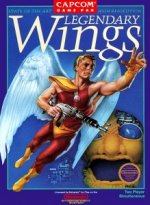
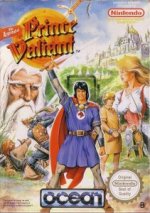
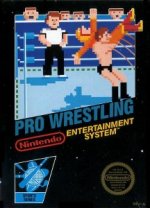

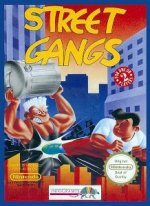
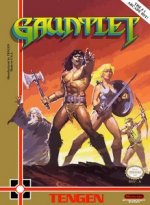
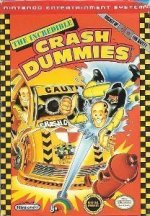


 Save time
Save time